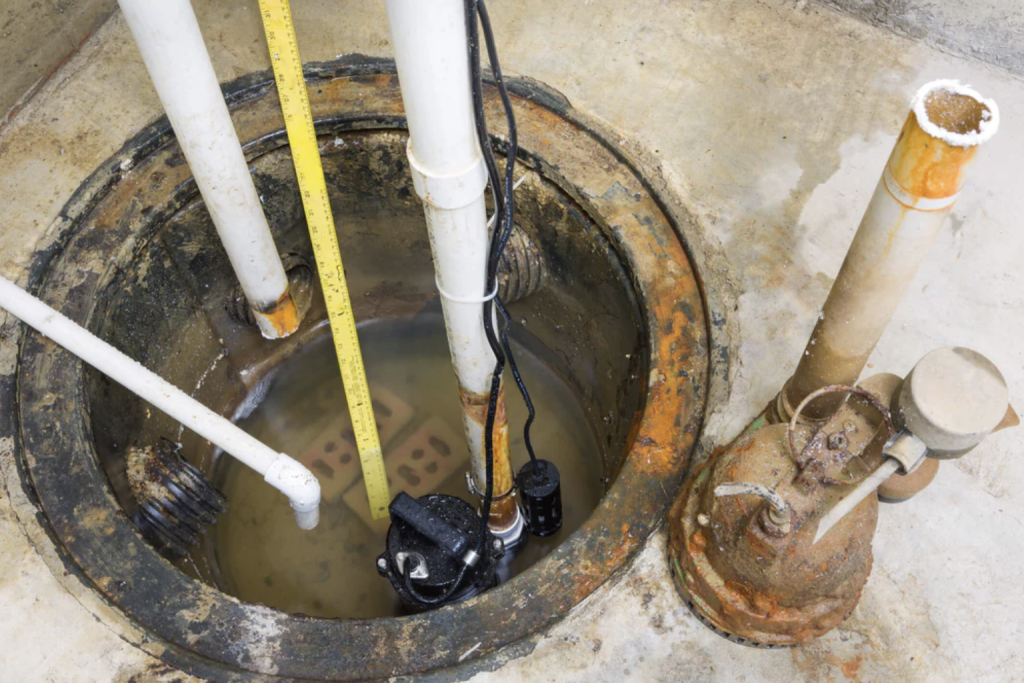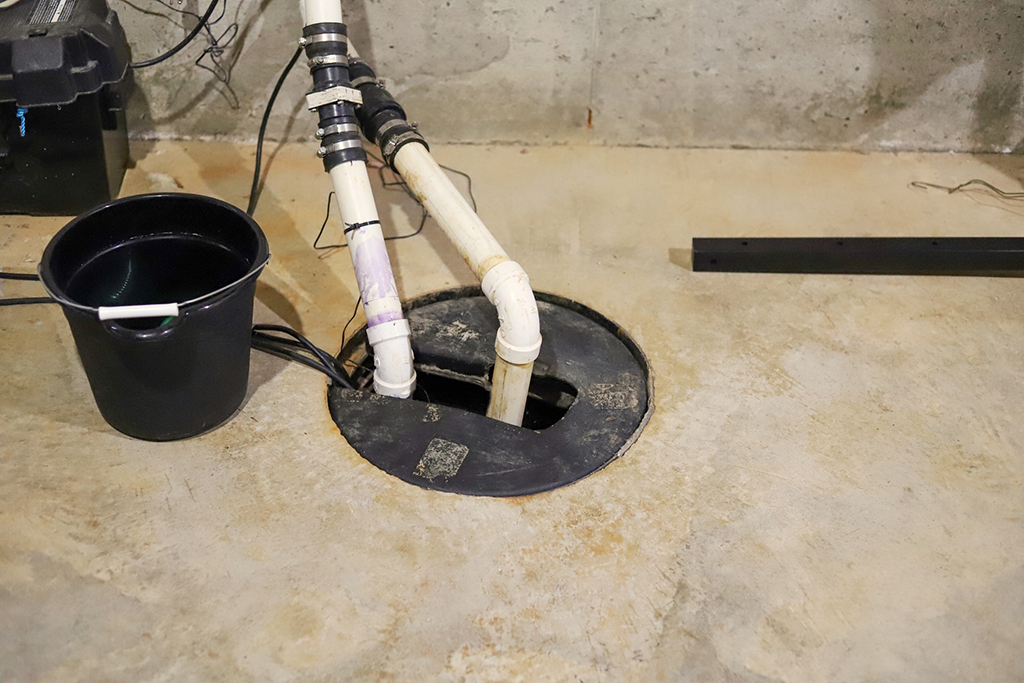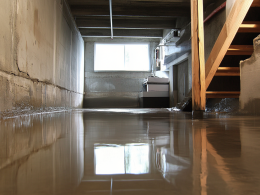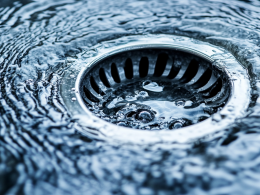Is your sump pump making strange noises? You’re not alone.
Many homeowners deal with noisy sump pumps, which can be frustrating and concerning.
A quiet, well-functioning sump pump protects your basement from water damage.
I’m here to help you understand and solve this common problem.
In this post, I’ll guide you through 8 frequent causes of sump pump noise and provide practical solutions.
You’ll learn how to identify different types of pump sounds and what they mean.
By the end of this article, you’ll know how to troubleshoot noisy sump pumps, when to attempt DIY fixes, and when to call in a professional.
Let’s dive in and restore some peace to your basement!
Understanding Normal Sump Pump Noises

Before we dive into troubleshooting noisy sump pumps, it’s important to know what sounds are normal.
A working sump pump isn’t silent, but its noises shouldn’t be disruptive.
Let’s explore the typical sounds from a properly functioning pump.
1. Regular Operating Sounds
- Sump pumps, by their nature, make some noise during operation.
- Knowing what sounds are normal is important to identify when something might be wrong.
- Most of these noises are low-level and shouldn’t disrupt your daily life.
2. Low Hum
- You’ll often hear a steady, low-pitched hum when your sump pump works properly.
- This sound comes from the motor running and water moving through the system.
- It’s a good sign that your pump is doing its job!
3. Light Clang
- Don’t be alarmed if you hear a brief metallic sound when your pump starts up.
- This is usually just the initial impact of water hitting the pipes.
- It should only last a moment and isn’t a cause for concern.
4. Gurgling
- As water moves through your sump pump system, you might hear a gurgling noise.
- This happens when the flowing water pushes air out of the pipes.
- It’s completely normal and indicates that water is being properly discharged.
Sump Pumps: When Noise Indicates a Problem
While some noise from your sump pump is normal, certain sounds can signal trouble.
Knowing how to distinguish between regular operation noises and warning signs can help you catch issues early, saving you from costly repairs or water damage.
1. Identifying Abnormal Noises
- Increase in Noise Levels: If you notice your sump pump getting louder over time, it could be a sign of wear and tear. This might be due to parts wearing out, the pump becoming misaligned, or debris clogging the system.
- New or Unusual Sounds: Listen for grinding, thumping, or continuous loud clanging. These noises often indicate mechanical issues or blockages that need attention.
2. Immediate Actions
- Inspection: If you hear unusual noises, start with a visual check. Look for obvious issues like debris in the pit or misaligned parts. Sometimes, a quick cleaning or adjustment can solve the problem.
- Temporary Fixes: For minor issues, you might be able to reduce noise by tightening loose components or adding some insulation around noisy pipes.
3. Professional Assistance
If noises persist despite your troubleshooting efforts, it’s time to call in a professional.
They can diagnose and fix issues you might miss, ensuring your pump works efficiently to protect your basement from flooding.
Remember, a low hum, light clang at startup, and occasional gurgling are all normal sounds for a sump pump.
Investing in a high-quality pump can lead to quieter operation and fewer headaches.
If you hear any abnormal noises, don’t ignore them – prompt inspection and professional help when needed will keep your pump running smoothly and your basement dry.
Common Noisy Issues and Their Solutions
Sump pumps can produce various noises, each indicating a different issue.
Understanding these sounds and their causes is crucial for maintaining a quiet and efficient sump pump system.
Let’s explore some common noisy issues and how to address them.
1. Loud Vibrating Noises
Vibrations are a common source of sump pump noise.
While some vibration is normal, excessive shaking can indicate underlying problems that need attention.
Causes
Loud vibrations often stem from misalignment in the pump system.
This could be due to a bent drive shaft or damaged impeller veins.
These issues can occur over time or from improper installation.
In some cases, the pump may be hitting the side of the sump pit, causing vibrations to transfer through your home’s structure.
Solutions
For vibration issues, start with a professional inspection.
They might suggest using rubber grommets to reduce vibration transfer.
Insulating pipes can also help dampen noise.
Parts like the drive shaft or impeller may need replacement in severe cases.
If the pump hits the pit, adjusting its position or securing it more firmly can help.
Regular maintenance checks can prevent many of these issues from developing.
2. Gurgling Noises
Gurgling sounds are common in sump pump systems, but excessive gurgling might indicate a problem that needs addressing.
Causes
Gurgling sounds usually occur when water flows through pipes.
It’s often more noticeable with standard check valves.
While some gurgling is normal, excessive noise could indicate a problem.
This might be due to air trapped in the lines or a check valve that’s not functioning properly.
Solutions
Installing a point-of-discharge pipe can help reduce gurgling.
If air is trapped in the lines, a professional can release it.
Upgrading to a spring-loaded check valve might also quiet things down.
Ensuring the discharge pipe has a slight downward slope can help water flow more smoothly, reducing gurgling.
Adding a small air release hole in the discharge pipe can sometimes alleviate the problem.
3. Banging or Thumping Noises
Banging or thumping sounds can be alarming and indicate that your sump pump system needs attention.
Causes
Banging or thumping often happens when pipes hit walls or there’s a lack of insulation.
This is especially common in older installations or those done quickly.
The noise can also occur if the pump is turning on and off rapidly due to a faulty float switch or if the pump is sucking air.
Solutions
Insulating pipes is a key solution here.
Use rubber stoppers under the sump pump lid to reduce vibrations.
Securing loose pipes to joists or walls can prevent them from moving and making noise.
If the pump is cycling too frequently, adjusting or replacing the float switch may be necessary.
Ensuring the pump isn’t running dry can also prevent thumping noises.
4. Clanking Noises
Clanking noises from your sump pump can be disconcerting.
These sounds often indicate something is loose or out of place within the system.
Causes
Clanking might indicate dirty water in your system or worn-out parts.
Over time, debris can accumulate, and components can degrade, leading to these sounds.
Loose mounting bolts, a damaged impeller, or objects caught in the pump can also cause clanking.
Solutions
Start by cleaning the area around your sump pump and the pump itself.
If the noise persists, you might need to replace old parts.
Professional reinstallation might be necessary to correct the issue of improper installation.
Check and tighten any loose bolts or fittings.
If objects are caught in the pump, carefully remove them.
Regular cleaning and maintenance can prevent many clanking issues.
5. Humming Noises
A humming sump pump isn’t always cause for concern, but if it’s loud or the pump isn’t moving water, it’s time to investigate.
Causes
A humming sump pump often points to a clogged vent hole, a stuck check valve, or frozen discharge pipes.
These issues prevent the pump from moving water effectively.
Sometimes, a humming noise can also indicate that the pump is running but unable to move water due to a blockage or malfunction.
Solutions
Clean out the vent hole if it’s clogged.
Make sure the check valve is pointing in the correct direction.
In cold weather, you may need to thaw frozen pipes carefully.
If these don’t work, call a professional.
Check for any blockages in the pump or pipes.
If the pump is humming but not moving water, it may need to be primed or might have a more serious internal issue requiring professional attention.
6. Grinding Sounds
Grinding noises from your sump pump are never a good sign and usually indicate a serious problem that needs immediate attention.
Causes
Grinding sounds usually mean the impeller has a problem.
It could be faulty, jammed, or damaged by debris.
In some cases, bearings in the motor might be worn out, causing a grinding noise.
Foreign objects trapped in the pump can also create a grinding sound.
Solutions
If the impeller is jammed, carefully clear out any debris.
If it’s damaged, you’ll likely need to replace it.
This job often requires professional help to ensure it’s done correctly.
If the bearings are worn, the entire pump might need replacement.
Regular cleaning and maintenance can prevent many grinding issues.
Consider installing a pump with a grinder feature if your sump often contains debris.
7. Continuous Clanging Noises
Continuous clanging from your sump pump can be particularly annoying and is often a sign of improper installation or worn components.
Causes
Continuous clanging often results from heavy vibration or improper discharge pipe installation.
The pipes might be hitting against each other or nearby surfaces.
Loose check valves or worn bearings can also contribute to constant clanging noises.
Solutions
Wrapping pipes with insulation can reduce noise.
Sometimes, you might need to reposition the discharge pipe for a straighter path.
This often requires professional assistance to ensure proper water flow. Check and tighten any loose fittings or valves.
If bearings are worn, they may need replacement.
Add pipe hangers or straps to secure loose pipes and prevent them from hitting nearby surfaces.
8. Noisy Sump Pump Motor
While all sump pump motors make some noise, excessively loud motors can be a nuisance and may indicate inefficiency or potential failure.
Causes
Noisy motors are common in older pump models or those made from plastic or PVC.
These materials don’t dampen sound as effectively as newer, higher-quality materials.
Worn bearings, loose motor mounts, or an improperly sized pump for your sump pit can also contribute to motor noise.
Solutions
Consider replacing an old pump with a newer cast iron model for quieter operation.
If replacement isn’t an option, mounting the motor on rubber pads can help reduce noise transfer to the surrounding area.
Ensure the pump is the correct size for your sump pit.
Regular maintenance, including lubricating bearings (if applicable to your model), can keep the motor running smoothly and quietly.
In some cases, building a sound-dampening enclosure around the pump can significantly reduce noise.
Maintenance Tips to Prevent Noisy Sump Pumps

Regular maintenance is key to keeping your sump pump running quietly and efficiently.
By following these tips, you can prevent many common noise issues and extend the life of your pump.
1. Regular Inspection and Cleaning
Keeping your sump pump clean and inspecting it regularly can prevent many noise issues before they start.
This proactive approach can save you time and money in the long run.
Regular cleaning and inspection can catch small issues before they become big problems, reducing the likelihood of noisy operations.
2. Checking for Rust and Corrosion
- Method: Visual inspection of the pump and its components. Look for any discoloration or flaking on metal surfaces.
- Frequency: Monthly for areas with high water usage; quarterly otherwise. More frequent checks may be necessary in humid environments.
- Action: Remove any visible rust and apply a rust inhibitor if necessary. If corrosion is severe, consider replacing affected parts.
3. Removing Debris
- Method: Clear the sump pit and inlet screen of dirt or debris, including leaves, small rocks, and other foreign objects.
- Frequency: Monthly or more often if the pump runs frequently. It’s a good idea to check for debris after heavy storms.
- Action: Use a wet/dry vacuum or manually remove debris. Be thorough to prevent future clogs or damage to the pump.
4. Lubrication of Bearings
Proper lubrication is crucial for your sump pump’s quiet operation and longevity.
It reduces friction and wear on moving parts, a major noise source.
Well-lubricated bearings operate more smoothly and quietly, preventing unnecessary noise and extending the pump’s lifespan.
5. Ensuring Proper Float Switch Function
The float switch is crucial for your sump pump’s proper operation.
A malfunctioning float switch can lead to excessive noise from the pump running when it shouldn’t.
- Importance: Ensures the pump activates and deactivates correctly, preventing overflow or dry running. A properly functioning float switch prevents the pump from running unnecessarily, which can cause noise and wear.
- Method: Add water to the sump pit until the float switch activates. You can use a garden hose or bucket for this test.
- Observation: Check if the pump starts and stops at the appropriate water levels. The pump should start when the water reaches a certain level and stop when it drops below another level.
- Action: Adjust the float switch if necessary to ensure proper activation. If adjustment doesn’t solve the issue, the switch may need to be replaced.
- Regular Checks: Quarterly checks ensure reliable operation. More frequent checks may be necessary during rainy seasons or in areas with high water tables.
6. Inspecting Discharge Pipes
The discharge pipes play a crucial role in your sump pump system.
Properly maintained pipes can significantly reduce noise and ensure efficient water removal.
- Importance: Ensures unimpeded water flow and reduces noise caused by blockages or improper installations. Well-maintained discharge pipes prevent backflow and reduce strain on the pump, leading to quieter operation.
- Method: Visual inspection and running water through the pipes. Listen for any unusual sounds that might indicate a blockage.
- Frequency: Quarterly or after heavy rains. Due to leaf litter, more frequent checks may be necessary in areas with many trees.
- Action: Clear any obstructions to maintain proper flow. More severe blockages may involve using a plumbing snake or calling a professional.
Conclusion
In wrapping up, we’ve seen that a noisy sump pump isn’t just a nuisance—it’s often a sign of underlying issues.
From normal operational sounds to alarming grinding noises, each sound your pump makes has a story to tell.
By understanding these noises and their causes, you’re better equipped to maintain your sump pump and prevent water damage.
Regular maintenance, including cleaning, lubricating, and inspecting your pump, can prevent many issues before they start.
Remember, sudden changes or extreme sounds warrant attention, while some noise is normal.
Don’t hesitate to call in a professional for persistent problems.
A well-maintained sump pump is a quiet sump pump.
By staying proactive and addressing issues promptly, you can ensure your basement stays dry and your peace of mind intact.
Keep listening, keep maintaining, and enjoy the quiet efficiency of a properly functioning sump pump.











